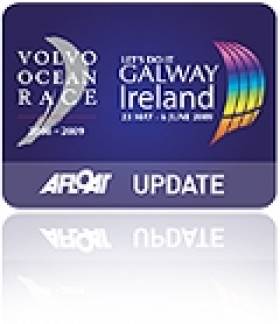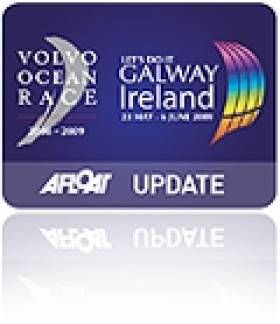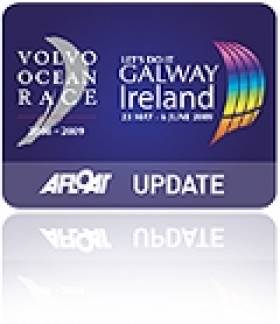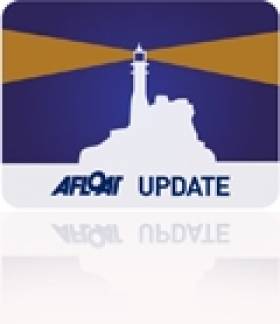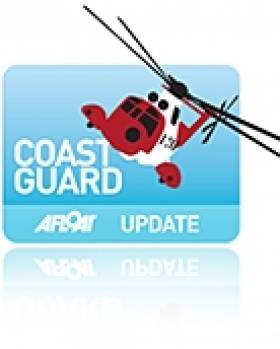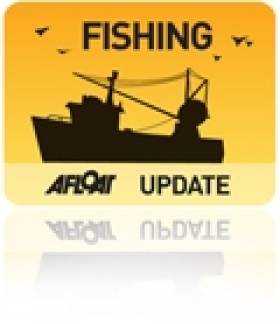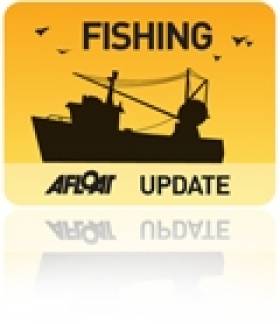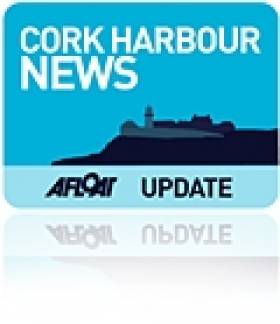Displaying items by tag: Coveney
The Marine Institute and BIM produced the "Discard Atlas" – which is a detailed compendium of discards by the Irish Fleet on a stock by stock and area by area basis. The Atlas also outlines a range of potential measures to help reduce discarding. The "Discard Atlas - scientific observations and potential solutions" was compiled with the support of Irish Industry, to inform the EU wide discard debate, to identify where action needs to be taken and to inform on the appropriate measures.
Commenting on the Atlas Minister Coveney said "Ireland has now taken the lead in the debate on discards and this Atlas will inform the process to achieve real change and a significant reduction in discarding within the new Common Fisheries Policy". Minister Coveney emphasised that "discarding is an EU wide issue, not just an Irish issue. While the Atlas highlights discarding in the Irish fleet, all Member States fishing these stocks, do so at the same time, using similar gears and under the same market conditions. While there may be some differences, overall the discard trends will be similar for all".
In calling for all Member States to publish their figures, the Minister said "I have consistently said that discarding is a complex issue and the debate must be informed by all the scientific facts, so we can better understand the issues and identify potential solutions". The information provided in the Atlas is based on information that is collected by all Member States. However, the international data has not been compiled into an Atlas format. Minister Coveney said " It is only when the full extent of the available international data are compiled can we collectively make informed decisions on a coherent EU wide discard policy, underpinned by a focussed suite of measures to significantly reduce and ultimately eliminate discards. The information contained in the Atlas re-enforces my long held view that we need to tackle the discard problem on a stock by stock and fishery by fishery basis, and not by a blunt simplistic blanket ban which will be difficult to enforce".
The Atlas states that in a review of world discarding, the UN noted that the northeast Atlantic has the second highest discard level in the world, estimated to be 1.3 million tonnes, the majority being attributed to EU fisheries. The extent of discarding varies and where international data are available, the picture is mixed. In the Celtic Sea, international discarding of haddock was 12,400 tonnes (56% by weight) in 2010. In the Irish Sea; an average discard rate of 30% for haddock associated with Irish vessels is in line with other countries. However, there are cases where Ireland makes a very minor contribution to overall international discarding; for example in 2010, 1,183t of Cod was discarded in the North West fishery (area Via), yet Ireland contributed to less than 1% of this.
Minister Coveney said that "I want to commend the Irish industry in their decision to support this project, and acknowledge that they have already been pro-active in bringing forward proposals to reduce discarding of, Cod, Haddock and Whiting in the Celtic Sea. I intend to build on this good work by asking the Irish Fisheries Science Research Partnership (IFSRP) to look at the matter in light of the new Atlas information and explore the possibility of coming forward with further ambitious discard mitigation measure. It is only by this type of cross industry co-operation that a comprehensive set of proposals for dealing with the EU wide discarding problem can be designed and implemented, and I call on other Member States to follow the Irish lead and publish the full details of their discards so that our common goal for the elimination of discards can be realised."
Marine Minister Ends Up in Choppy Waters
#VOLVO OCEAN RACE – Ireland's Minister of the Marine Simon Coveney jumped ship on Saturday but it was no political volte face instead it was the expediency of Team Sanya's Captain Mike Sanderson who jettisoned the Fine Gael Cabinet Minister shortly after the start of the Volvo Ocean Race in Alicante.

Minister Simon Coveney (left) and Sailing Anarchy Editor Alan Block in good spirits after going overboard from Team Sanya. Photo: Anders Soranio
Onboard Sanya guests for the start on Sanya included Coveney, a racing sailor himself, and Alan Block, Editor of Sailing Anarchy website. After the inshore couple of laps, they had to brave the elements and jump off the boat into the water and both ended up safely on Sanya's team rib.
As it turns out there was no rush and the guests could have sailed on with the Chineses entry. Within hours Sanderson was heading back to shore after suffering hull damage that looks like it's going to take a while to fix.
Coveney got the VIP seat for the race start because Discover Ireland is backing the Team Sanya entry for 25% of the campaign costs. The VOR finishes in Galway next July.
Marine Minister Showcases Galway at Volvo Race Start
#VOLVO OCEAN RACE – As the Volvo Ocean Race 2011-2012 kicks off tomorrow (5 November) from Alicante in Spain, Minister for Agriculture, Marine and Food Simon Coveney TD joined Tourism Ireland today, at a reception for key Spanish and international media contacts. As previously reported by Afloat.ie this week the event, which took place in the Volvo Ocean Race Village in Alicante, was an excellent opportunity to showcase Galway and Ireland as a fantastic holiday destination, kicking off Tourism Ireland's publicity drive around the world during the nine-month race to reach a huge audience of potential holidaymakers.
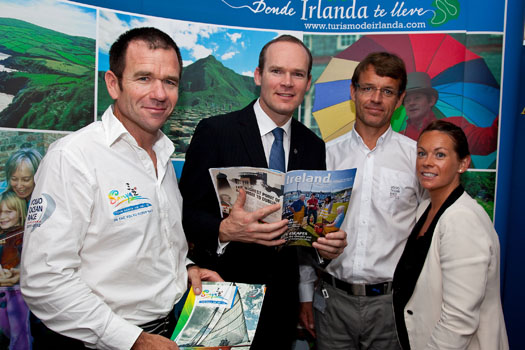
Mike Sanderson, skipper of Team Sanya, the Chinese/Irish boat; Simon Coveney TD, Minister for Agriculture, Marine and Food; Knut Frostad, CEO of the Volvo Ocean Race; and Barbara Wood, Tourism Ireland's manager in Spain, at the Tourism Ireland reception in Alicante, prior to the departure of the Volvo Ocean Race 2011-12 tomorrow
The Volvo Ocean Race attracts huge publicity around the world – with billions of people around the globe seeing it on TV, reading about it and tuning in to hear about it on the radio. Over the coming months, Tourism Ireland will be working in key markets where the race stops, to ensure that Galway and Ireland are in the spotlight.
Niall Gibbons said: "The Volvo Ocean Race attracts huge publicity around the world and with Galway due to host the grand finale, there's an ideal opportunity to showcase Galway and the west, and the many attractions that the island of Ireland has to offer as a holiday destination. The event is a great 'hook' for Tourism Ireland to reach a huge audience of potential holidaymakers."
Galway will host the final stopover of the Volvo Ocean Race 2011-2012 in July of next year. The 2009 stopover of the Volvo Ocean Race in Galway brought 40,500 international visitors to the city, as well as 269 journalists from around the world.
Marine Minister to Promote Irish Sailing at Volvo Ocean Race
Coveney will officiate at an International press and VIP breakfast in the Volvo race HQ this Friday before the nine month long race begins on Saturday.
The Government Minister, himself an avid racing sailor, will see the Discover Ireland backed entry, Team Sanya, compete against the five other entries in a 33,000 mile race round the world that finishes in Galway next July.
Ireland's two top offshore sailors are involved in the race but there is no Irish crew on the Discover Ireland backed boat. Kerry's Damian Foxall is a watch leader on Groupama, Wexford's Justin Slattery is bow man aon team Abu Dhabi.
Discover Ireland is putting up to 25% of the sponsorship for the Chinese Sanya entry.
Also attending Friday's breakfast event, as part of Galway's delegation, is Irish ambassador to Spain Justin Harman, the Mayor of Galway Hildegarde Naughton and Galway City Manager Joe O'Neill.
As part of the promotional build up a Galway Hooker is en route to the middle east in an unexpected cultural exchange between Ireland and the United Arab Emirates. The traditional Irish sailing boat is on the way to Abu Dhabi in an exchange that will also see six Arabian dhows in Galway for the finish of the race next summer.
Government Minister Commends Emergency Services in Fastnet Rescue
"This was a dramatic sea rescue that was co-ordinated with speed and professionalism and everybody involved should be commended for their efforts. This is a reminder of just how important it is for Ireland to have a well resourced sea rescue infrastructure."
Minister Coveney went on to say "The Fastnet race is one of the most high-profile offshore yacht races in the world and Rambler 100 is one of the best known racing yachts on the planet. This incident will be reported in the international press and we can be proud of the way in which Irish emergency services contributed to preventing any loss of life."
"Most importantly, my response is one of relief that there was no loss of life, which considering the size and speed of the yacht and the conditions at the time, is a minor miracle. I hope everyone involved will make a full recovery."
'Following continuing contact with the OPW, it has been confirmed to me that a new contract for the construction of the new station has been awarded and work is to start very soon. This tender process has been ongoing for more than a year and I am delighted that it has finally been awarded and work to commence shortly.'

Marine Minister Simon Coveney TD with Victor Shine Deputy Area Officer Crosshaven Coast Guard Unit, Vincent Farr Area Officer and James Furlong Unit Member looking over the plans for the new €1.5 Million Coast Guard Station at Crosshaven, Co. Cork. The contract has been awarded to Blarney firm Cumnor Constuction Ltd and work will commence shortly. Photos Billy macGill
'Those who work at Crosshaven Coast Guard are to be commended for their commitment and dedication to the local community in a voluntary capacity. We must now ensure that they are working in a station that reflect this loyalty and high standard of service.'

The contract has been awarded to Cumnor Construction Ltd. of Blarney on August 3rd. Work on the site is expected to commence very shortly.
Visiting Castletownbere this weekend, the Minister for Agriculture, Food and the Marine, Simon Coveney TD, announced a 'Special Assistance for Young Fishermen' scheme. Fishermen under 40 years of age who have not previously owned a fishing vessel can avail of grant aid up to 15% (to a maximum of €50,000) of the acquisition cost of a second-hand whitefish vessel.
Speaking about the scheme the Minister called it, "a positive stepping stone for future entrepreneurship within the fishing industry". He also highlighted how "new blood and fresh thinking are essential for the ongoing development of any industry. This Scheme will assist and enable young fishermen who have a proven track record within the sector to set themselves up as managers of their own vessels, set their own targets and goals, and hopefully impart their knowledge to those they take on to work with them."
The Minister also announced €84,000 in grant aid for seven seafood companies in the Cork area under the BIM Seafood Value Adding Scheme. The grant aid underpins an overall investment of €213,500 in the area.
As he announced the grant aid, the Minister congratulated the companies on their successful projects, "Focusing on innovating and adding value will secure a long term, competitive future for Irish seafood companies. It is heartening to witness the level of ingenuity and creativity coming from these companies, backed by a sound business capacity. It really bodes well for the seafood industry's future in Cork".
The Minister has also requested that BIM would begin a comprehensive economic survey of the Castletownbere area to determine the level of seafood activity in the area and establish its economic importance for the region. Minister Coveney said "This Report will provide hard economic evidence on the dependence and economic importance of seafood in the region. This will help to inform future policy making for the area at Local, National and EU level. With the completion of world class harbour facilities in Castletownbere in the coming months it is vitally important that everybody can work together to maximise the true economic potential of the Region. I feel this study by BIM, highlighting the economic importance of the Seafood sector for the Region, will help to drive on the development of the industry in West Cork and Castletownbere in particular".
Adding value to Irish seafood is a key strategic driver for BIM as Ireland's seafood development agency and they estimate that an additional €50 million in value added seafood sales can be created by 2012. The opening of BIM's Seafood Development Centre in 2009 has encouraged significant uplift in new product development and innovation, with 178 seafood companies availing of its services in 2010. For more information on the Seafood Value Adding Scheme visit www.bim.ie
Coveney will Demand Action against Iceland and the Faroe Islands for Excessive Mackerel Fishing
There is a common mackerel fish stock in Irish, Norwegian and European waters. These same fish transit through Icelandic and Faroes waters during their migration from Norway to spawn off the south-west of Ireland. If the mackerel stock is overfished in one area, this will damage the stock and reduce the availability for the Irish fishing industry.
The Minister said that "Iceland, for the last three years and the Faroe Islands for the last two, have been operating unilaterally and their fishing levels ,which will come to over 300,000 tonnes this year, are completely unsustainable and outside of normal internationally recognised management protocols. The result of the Icelandic and Faroes overfishing is that almost 1 million tonnes of Mackerel will be fished this year, almost 50% more than the scientifically advised maximum outtake from the stock."
Minister Coveney said "Let us be clear, if there is not a resolution to this situation, serious damage will be done to the mackerel stock in EU waters resulting in potentially dramatic reduction of quotas to Irish vessels and to the supply of mackerel to Irish fish factories. This outcome is totally unacceptable as EU/Norwegian fishing policy has resulted in gradually building up the mackerel stock, which now faces destruction from irresponsible fishing by Iceland and Faroes. These two countries, outside the EU, are totally ignoring the responsible management of the stock and if left unchecked, the current behaviour will do economic damage with loss of jobs in the north- west and south -west of Ireland."
Numerous attempts by the EU and Norway over the last number of years to bring Iceland and the Faroe islands into a fair and sustainable management framework for mackerel have failed. On the demands for trade sanctions the Minister said "I have put this issue on Tuesday's EU Fisheries Council agenda as I am very concerned at the delay in introducing legislation to implement trade sanctions against these two countries. The time for inaction is over and there is an immediate need, supported by Member States for legislation to be adopted this autumn". He went on to say that "if left unchecked this level of fishing by Iceland and Faroes will have a detrimental impact on the health of the mackerel stock which is, economically, Ireland's most important fishing resource".
The Council will also discuss methods for setting fishing levels for 2012. On the Commission's proposals the Minister said "I want coherent and scientifically informed arrangements put in place to determine 2012 fishing levels and to sustain our fishing industry and coastal communities".
The Minister plans to meet the Scottish and English fisheries Ministers, Richard Lockhead and Richard Benyon bilaterally. These meetings will focus issues of common interest and in particular the mackerel overfishing by Iceland and the Faroes.
Minister for the Marine Simon Coveney, in his address to the participants, emphasised the importance of the maritime sector and his determination to oversee a major growth in added value for the fishing industry.
The very successful Summer School on Friday 10th June on the theme 'Recreation in a Working Port' saw 8 speakers address an audience of 60+ representatives from a wide range of interests on topics ranging from the history and heritage of the harbour, its potential for recreation and its presence in art an imagination . Key speakers included Louis Duffy of Cork County Council, who presented the Council's hot off the press Cork Harbour Study, Arend Lambrechtsen from the Netherlands, Jim Murphy of the Passage West & Monkstown Harbour Users' Group, Clare Wright of CAAN, who outlined the exemplary programme for development of canoe trails in Northern Ireland, Josephine O'Driscoll of Failte Ireland and Ryan Howard of SECAD, the Leader group which covers the harbour area. Session chairmen were Cathal O'Mahony of UCC's Coastal and Marine Research Centre (CMRC), who set Cork Harbour in its place in the world, Cork City Council's Damien O'Mahony and Tom MacSweeney who led the question and answer session. The event concluded with Seamus Harrington reading his poem Blind Harbour.
Pádraig Ó Duinnín outlined the journey undertaken by Meitheal Mara in arriving at the promotion of their first Summer School. The event was organised by Marina Sheehan of Meitheal Mara in the splendid boardroom of the Port of Cork overlooking their new city-centre marina.
'The Sea: One of Ireland's Greatest Natural Resources' - Coveney
The Minister was speaking during a visit to the Marine Institute's research vessel, RV Celtic Explorer, on its return from a mission to the Labrador and Newfoundland Seas.
He added "I am particularly pleased that this is my first official engagement as Minister for Agriculture, Marine and Food. The work of the RV Celtic Explorer highlights the essential nature of marine research, development and sustainable management, through which Ireland is developing a strong and well-deserved reputation as an emerging centre of excellence, where we have prominent roles in many European and international marine science bodies."
Minister Coveney commended the Marine Institute and its Chief Executive, Dr Peter Heffernan, for its leading and proactive role in the areas of fisheries science, marine environment and food safety as well as ocean science and said that he looked forward to working closely with the Institute and benefitting from the research and advice which they would undertake and provide.
The Minister noted that Ireland's two national research vessels – RV Celtic Explorer and RV Celtic Voyager – will record 267 days at sea during 2011, during which they will be engaged in fisheries surveys, underwater mapping, climate studies and deepwater surveys.



























